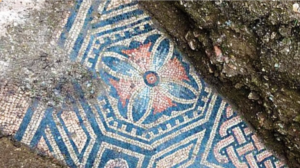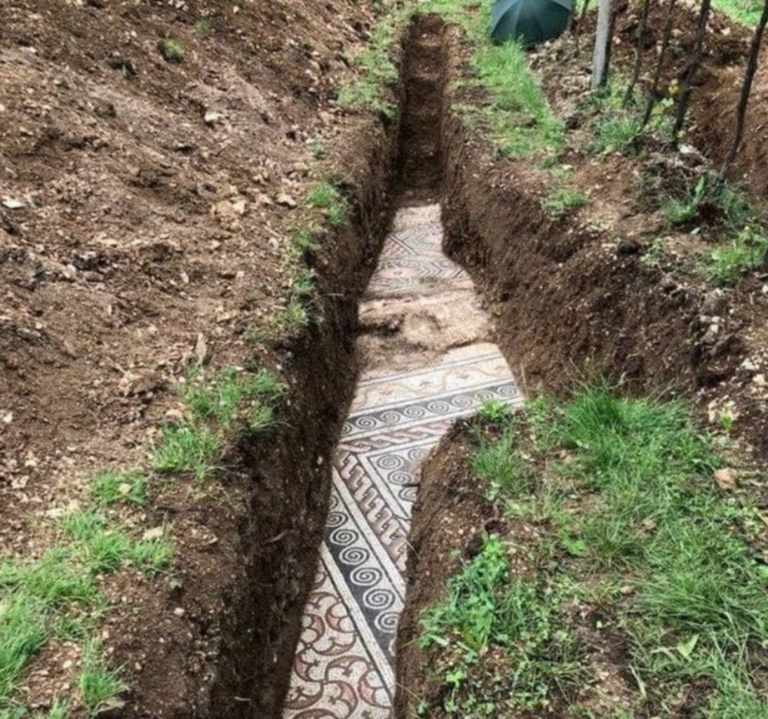Archaeologists have been trying for almost a hundred years to find the remains of an old Italian house. They dug for years before they found their prize: a beautiful Roman mosaic hidden under a farm in the hills above Negrar di Valpolicella in northeastern Italy.

People think that the intricately carved floor came from the same house that was found all those years ago. The mosaic is made up of many small pieces of marble and glass cut into geometric shapes and carefully put together to make geometric patterns.

The different levels of mortar under the colourful mosaic show that the floor has been fixed many times. This find is good for both archaeologists and the people. The mosaic will be a view into the past and present of this part of Italy and a reminder of how important it is to finish what you start. It’s a rare find, and I hope it will encourage people in the future to keep digging.
The beautiful mosaic floor dates back to the third century AD. Scientists are studying it closely to figure out the best and safest way to dig it up. This Roman tile was found on a farm near Verona, Italy, more than a hundred years ago. It is a very important piece of history.

Because of this find, they were able to dig up pieces of the Roman villa’s ground and structure, giving them a look into the past. They will be able to carefully dig there without destroying the complex design. By doing this, we can learn a lot about the habits and customs of our ancestors and get a better idea of how they lived in the past.

It could also show important things about how smart and creative they are. More research can help us learn more about this interesting time period. The site hadn’t been worked on since 1922, but this summer, a team led by Verona’s Superintendent of Archaeology, Fine Arts, and Landscape began digging there again.
Not long after they started looking, they found an interesting object that had been hiding from them for almost a century. A historian named Myko Clelland found the find online and tweeted about it. The news quickly went viral and got a lot of attention.

Now, the superintendent must work with the landowners and the local government to figure out how best to show this archaeological find to guests.
For something like this to happen, it takes time and money, and the process must always be closely watched. If this piece of history, which was kept secret until now, is made available to everyone, people will be able to learn more about this unique society and understand it in the right context.
Source: dailypositiveinfo.com
